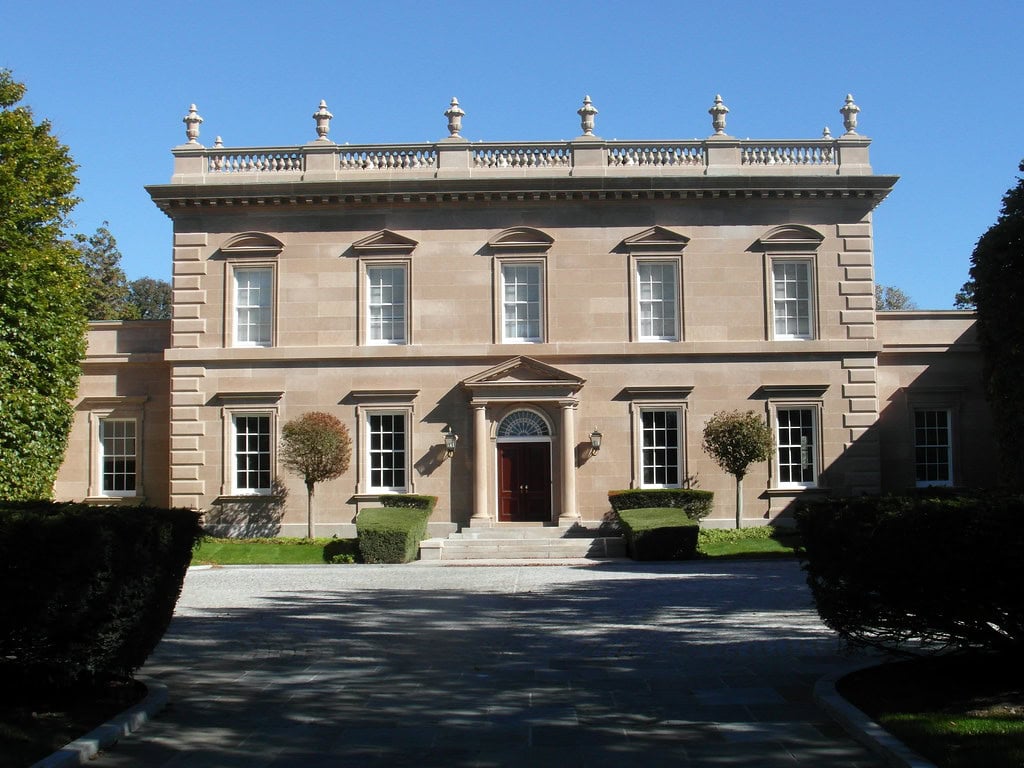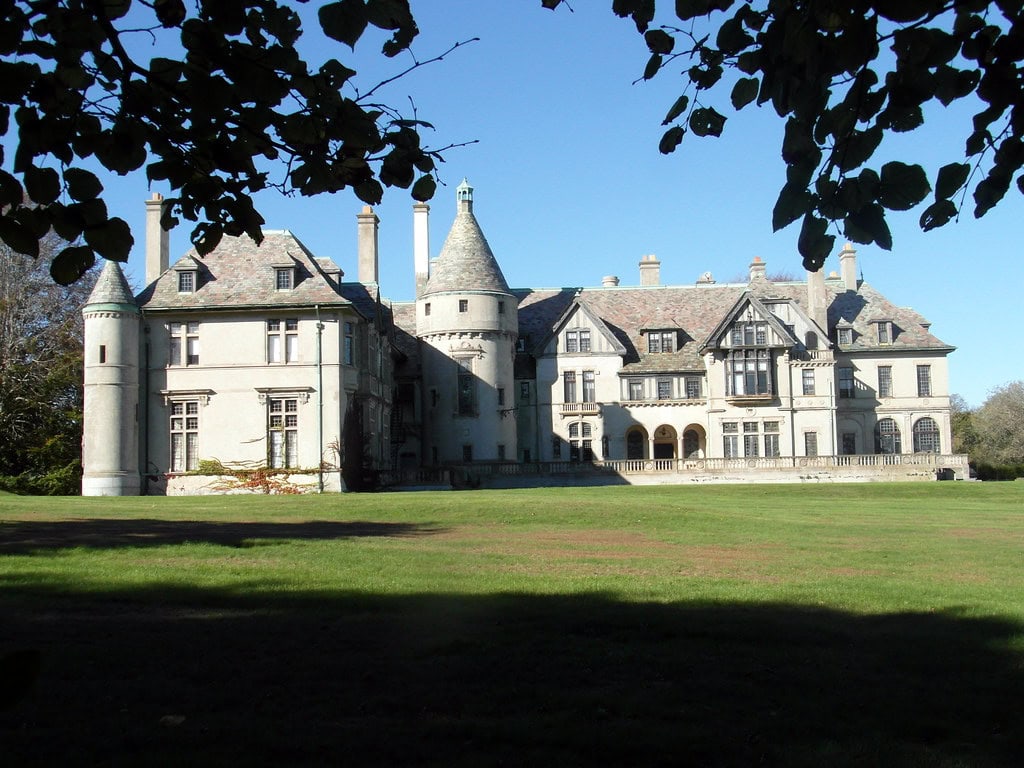Ladd's Quiet Hilltop Signal
On a low hill above Providence, Ladd Observatory began sending out precise time signals in the fall of 1893. That alone puts it in a different category from most buildings in the city.
Its purpose wasn't social or ornamental. It served as a regional regulator of clocks, schedules, and navigation charts.
The building, with its heavy brass instruments and chilled stillness, still stands at 210 Doyle Avenue. People today look through its old telescope, but once it helped decide when a fire bell would ring.
The Investment That Built a Clocktower Nerve Center
In the spring of 1889, former Rhode Island governor Herbert W. Ladd offered to pay for an observatory at Brown University.
It wasn't pitched as civic beautification or public outreach.
It was an academic infrastructure, part classroom, part research lab.
The university accepted the offer and selected a site known then as Tintop Hill, the highest point in Providence.
That choice mattered. The elevation minimized atmospheric distortion, a practical concern for any refracting telescope. Construction began in May 1890.
The firm chosen for the design, Stone, Carpenter & Willson, worked out a Classical Revival plan with symmetry and restraint.
The Ladd Observatory was completed and dedicated on October 21, 1891.
Brown spent $40,000 on the project, a figure that would be worth about $1.4 million in 2024 dollars.
It was fitted with a 12-inch refractor telescope designed by John Brashear.
Brown installed this with the understanding that the observatory would support astronomy education and research, as well as geodesy and timekeeping.
The location also placed it within the orbit of urban infrastructure, making it part of the growing list of things to do in Providence, RI, for anyone with an interest in science or precision instruments.
Brown assigned the Ladd Observatory to Professor Winslow Upton, who had already been teaching astronomy there since 1883.
He became its first director and helped lay out its instructional and operational framework.
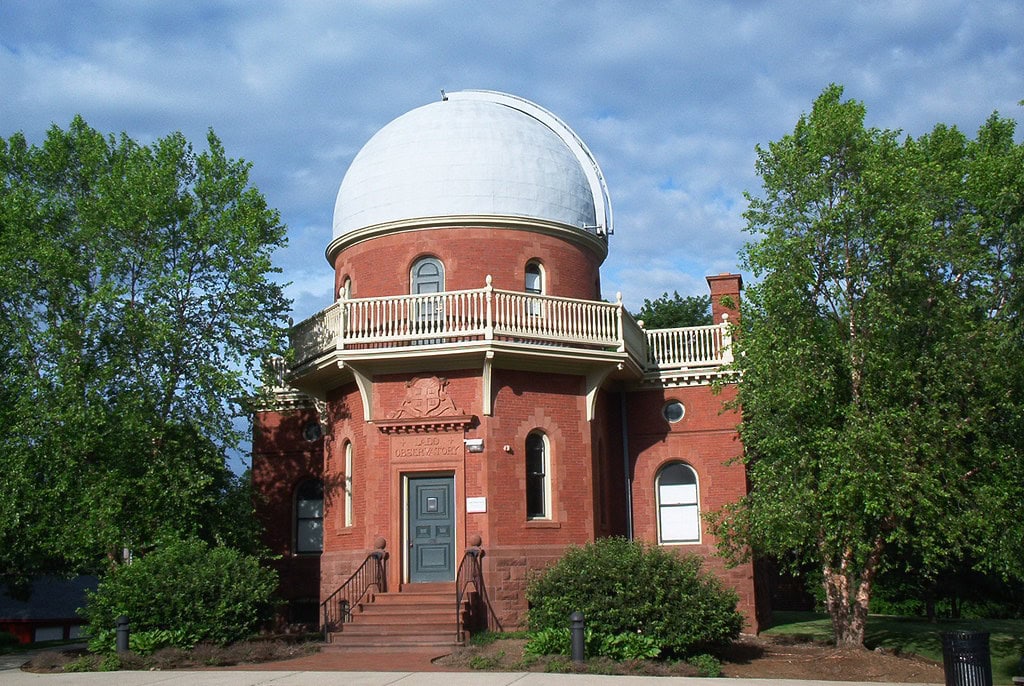
Timekeeping as Utility and Service Contract
By fall 1893, Ladd Observatory was doing more than instructing students.
It had started pushing time signals out through a telegraph wire, offering a steady pulse of precision to the city's clocks.
The observations behind those signals came from a 3-inch meridian circle built by George N. Saegmuller.
Every evening, an operator noted the transit of specific stars.
From those sightings, a pendulum clock was set to sidereal time.
Then came the math, sidereal to local standard, followed by conversion to commercial use.
The signals themselves were sold. One client was Rhode Island Electric Protective, a firm handling fire and burglar alarms.
The time pulses from Ladd controlled hundreds of what were known as slave clocks in offices, storefronts, and banks.
Brown University earned about $200 a year from that contract between 1906 and 1916, roughly $7,000 in 2024 value.
There was also a line connecting the Ladd Observatory to City Hall's Fire Department.
Bells rang daily across Providence at noon and again at 8:30 p.m., all keyed to Ladd's transmission.
The same signal regulated the bell in University Hall's cupola, timing class periods with mechanical certainty.
By November 1913, Ladd began receiving wireless signals from the Naval Observatory, transmitted through Arlington's NAA station.
Brown responded by stretching a 450-foot antenna between towers on University and Maxcy Halls.
The receiver sat in the basement of Wilson Hall.
That system remained in place until April 6, 1917, when the federal government ordered all radio operations to stop after the United States entered WWI.
Night Skies and Open Doors
In 1930, Ladd Observatory started holding public nights, letting visitors look through the Brashear refractor that had been used for lunar occultations and binary star measurements.
These events weren't staged with marketing flair; they were open hours, predictable and accessible, where people lined up to see Saturn's rings or the Moon's craters.
Two years later, that routine helped create something more organized: the Skyscrapers amateur astronomy society.
The group made Ladd its base until 1936, then acquired the Seagrave Observatory in North Scituate as its long-term meeting site.
But volunteers kept returning to Doyle Avenue. They didn't only operate the telescopes, they built instruments too.
For the 1937 Brown eclipse expedition, members constructed a Schmidt camera to help document the event.
That kind of hands-on participation kept the Ladd Observatory integrated into both academic work and hobbyist circles.
Well before this, Ladd had already been used for navigation instruction.
During WWI, naval cadets studied celestial methods in the dome.
That same trend picked up again during WWII when Ladd became a Navy training center for navigators.
In 1944, the observatory's time signals were used in a test of the region's Civil Defense air raid sirens.
Fire stations across Providence sounded their alarms daily at noon, synced by pulses from the observatory.
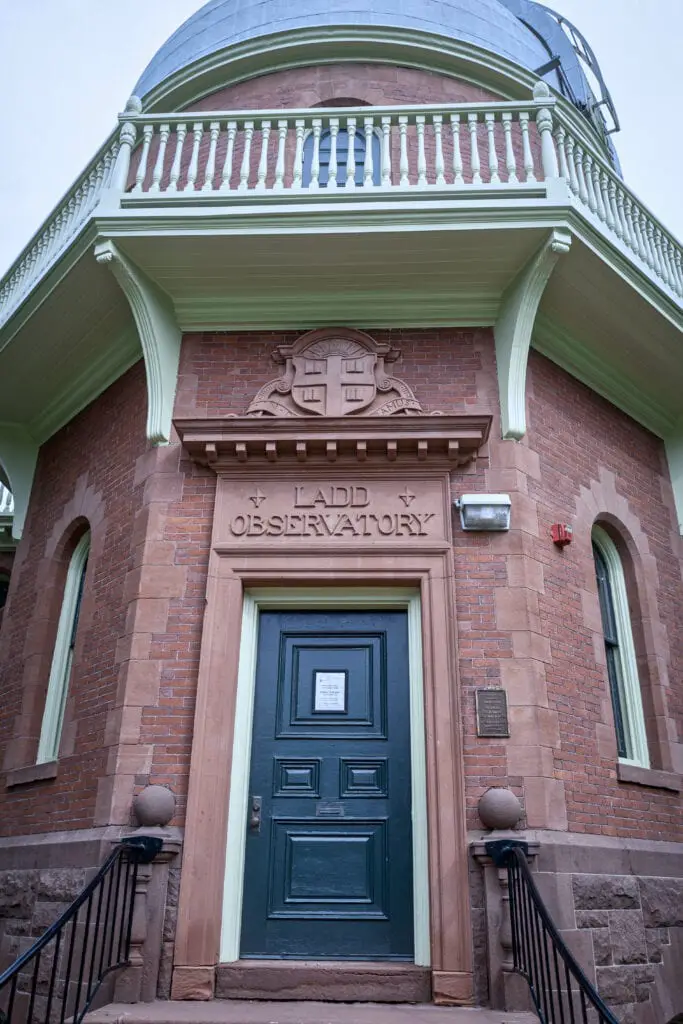
Hardware in Bronze, Glass, and Steel
At the center of Ladd sits a 12-inch refractor, built for work, not display.
John Brashear shaped the lens from crown glass cut in Paris and flint glass sourced from Jena, Germany, paired under a Charles S. Hastings design.
Its 15-foot focal length rests in a steel cradle on an equatorial mount, engineered by George N. Saegmuller to pivot with the sky.
Once balanced, it tracks stars without a touch, driven by a weight-powered clock mechanism built before the first commercial radio signal crossed the Atlantic.
Everything about that setup points to precision. The weights fall. The gears rotate. The telescope holds its target.
Nearby, a 3-inch meridian circle sits quietly. That instrument wasn't for looking, it was for timing.
Operators used it to catch the exact moment a known star passed overhead.
That single data point, repeated night after night, kept Providence in sync.
The building itself was structured around those machines.
Thick walls, cold floors, and tight window seals, all to protect the optics.
Rooms were dark, quiet, and built to isolate vibration.
There was no décor, only brass, wood, and quiet movement.
Most of the original gear is still there. Some sit under glass, some still run. None of it's automated.
There's no touchscreen, no backup system. If it moves, it moves because someone wound it.
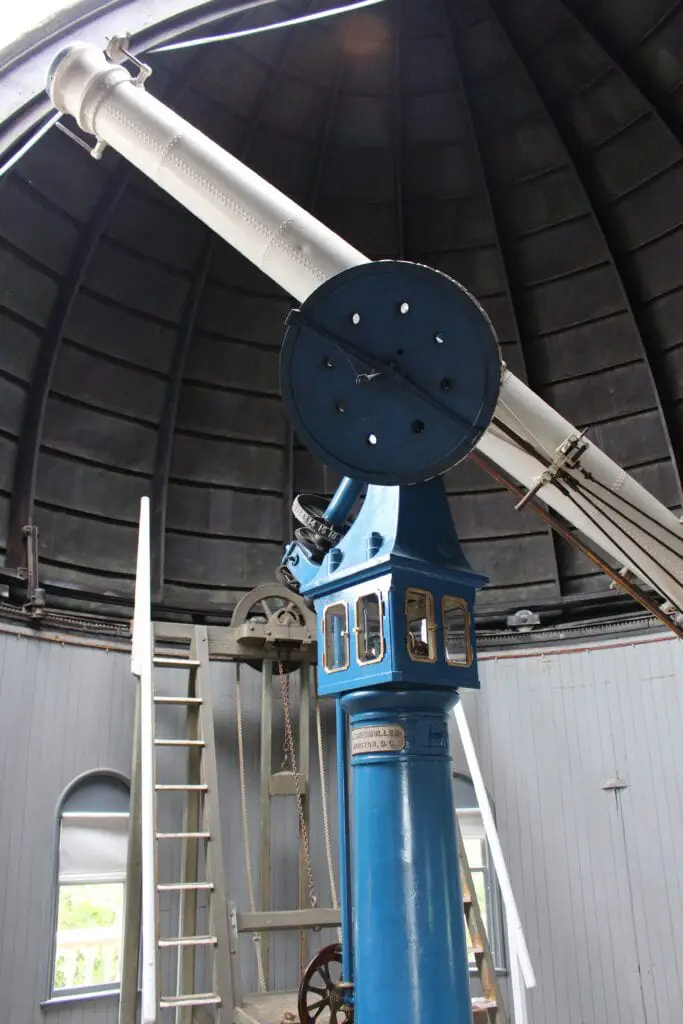
Public Hours, Private Circuits
Ladd opens on Tuesday nights, weather permitting.
Just a brass telescope on a dome floor, a chalkboard outside, and a handful of volunteers managing the line.
Reservations help manage the headcount, but the mood is casual; people come to see Saturn or just watch the gears spin.
The telescope is the draw, but Ladd still runs classes for Brown's Department of Physics.
Students get time on the instrument. Some handle maintenance. Some help run public events.
The mix of education and access has kept the Ladd Observatory visible without turning it into a stage.
Events tied to eclipses or meteor showers bring heavier foot traffic.
In those cases, the staff extends hours. Visitors pass through fast. They're there for the sky, or for the building itself.
The older systems haven't been mothballed. In 2008, Brown made plans to restore Ladd's original timekeeping network.
That meant tracing the old circuits, recovering regulators, and figuring out how to run pulses through 19th-century hardware.
Several original clocks, including those by Molyneux, Howard, and Riefler, remain in the building, some still ticking.
Ladd hasn't leaned into digital. No dome motor. No sensor array. No livestreams. The big telescope still runs on hand-turns and weight cables.
Everything that moves moves slowly. And everything that works, works because someone paid attention.
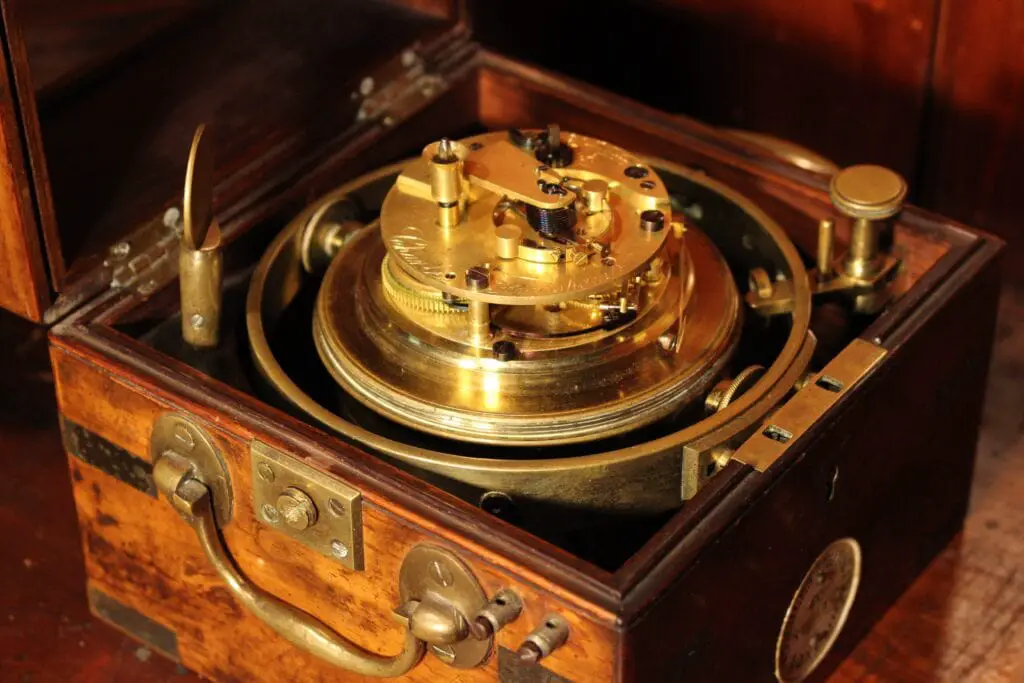
🍀

